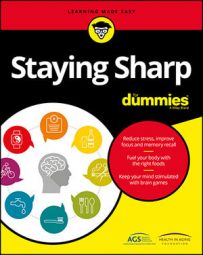They asked each participant to relax for a few minutes while they used an electroencephalogram (EEG) to record the electrical activity in participants' brains. Next, they gave the participants an anagram to solve. Try one for yourself: MPXAELE.
(Answer: EXAMPLE.)
The brain-activation patterns of the creative types and the methodical types were very different. The researchers found that the creative people used the right hemispheres of their brains when they were problem solving. Even when they weren't trying to solve a problem, creative people's EEGs showed the right hemispheres of their brains were active.
Creative people are very flexible in their thinking. Think of a maze that has multiple paths that lead to other paths that link to new ones, and so on. That's what the brain activity of the creative person is like. One idea will trigger another, which will spark yet another in a creative chain reaction. For example, a conversation may trigger a picture the person saw last month, which reminds her of a dream she had last week, which leads her to a new idea.The brain of a methodical thinker is different. It's like a straight road that starts at one end with the problem and moves systematically along a single path until it finds a solution. Methodical or analytical thinkers don't allow their brains to get distracted by other ideas; they just focus exclusively on what they need to do and the steps they need to take to solve the problem at hand.
You can train your brain to be more creative by looking at problems in new ways and using different perspectives. To think outside the box, try to look at the box from new angles. Imagine the box in a different color or with different decorations. Think of new ways to use the box. Mentally transform the box. With practice, you can come up with new, creative ways to address problems you face in your daily life. After all, electric lights, cars, computers, and cellphones all started as creative ideas to solve problems in new ways.

